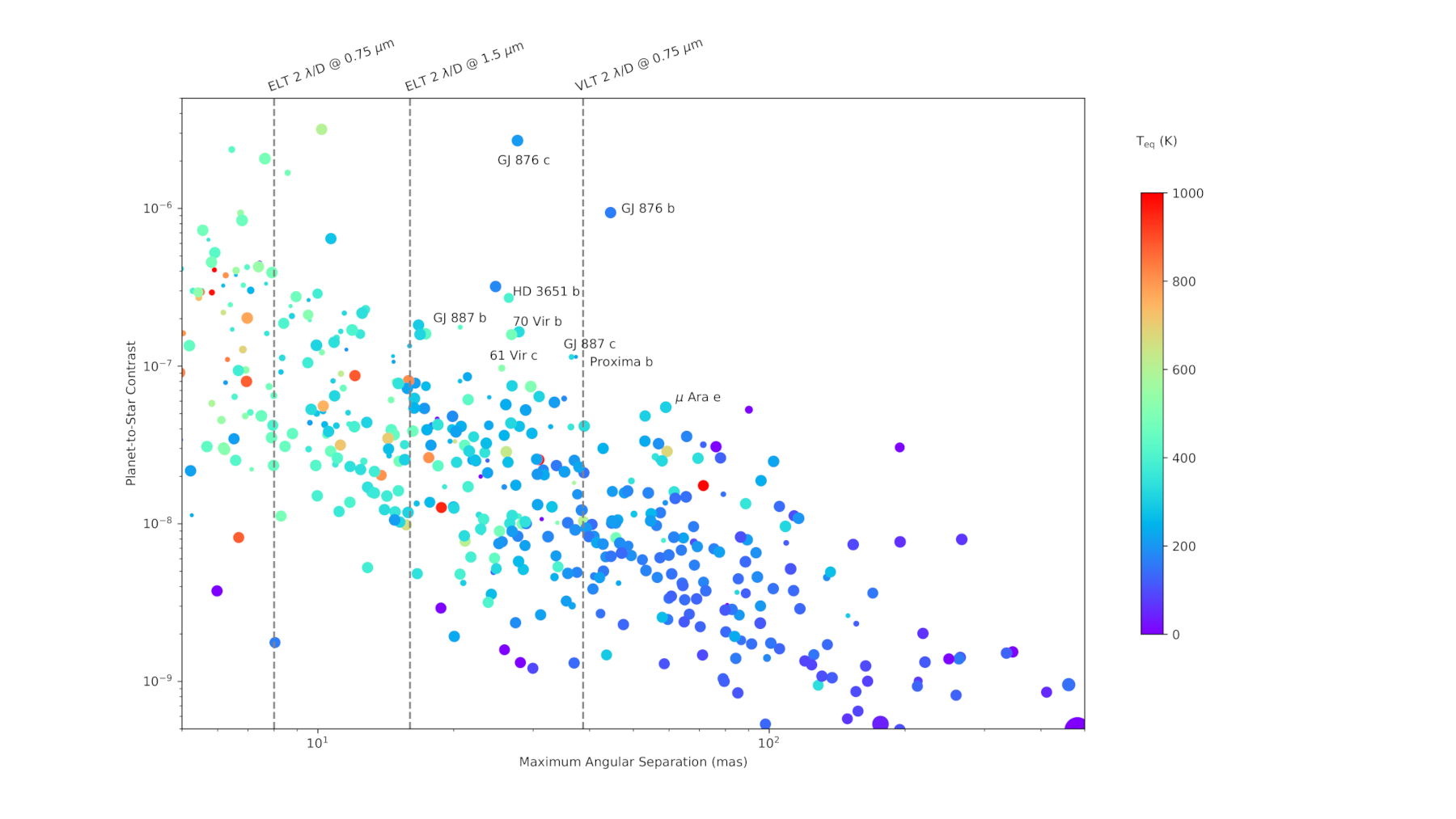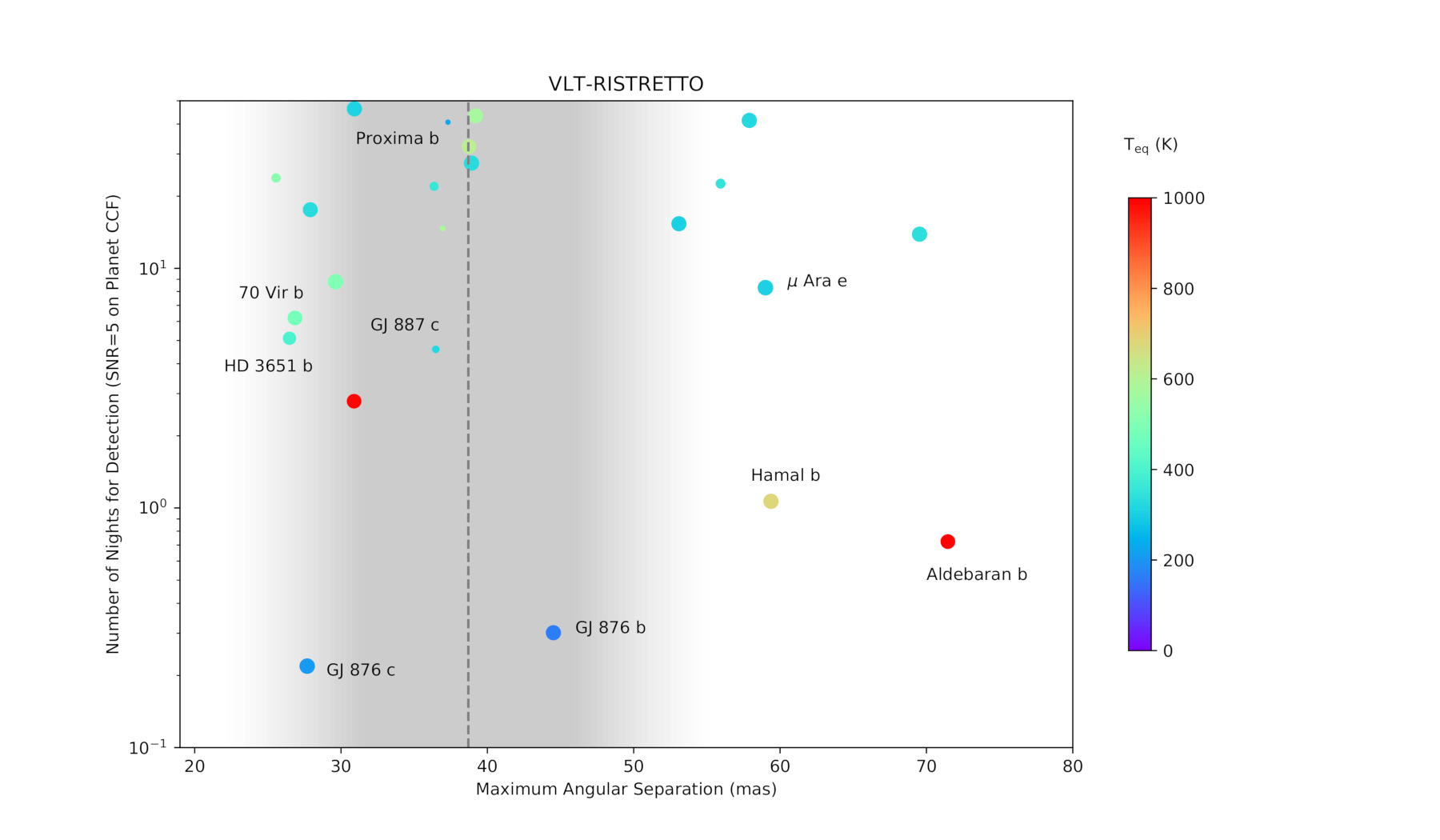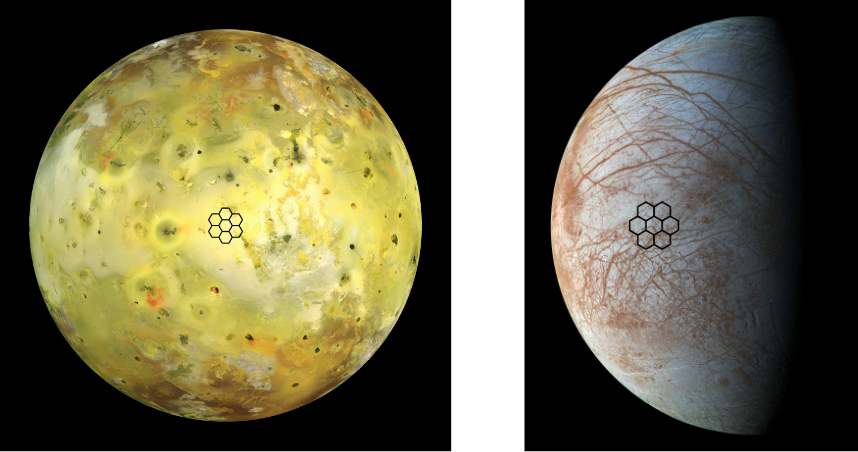Science #
) proximab](ann16056a_cut.jpg)
Primary science goal #
RISTRETTO primary science goal is the detection of the reflected light of exoplanets in the visible. It focuses on exoplanets orbiting very nearby stars, most of which do not transit.
Doing so also requires to locate the planet around its star, and this will be achieved using an integral-field unit with 7 hexagonal spaxels covering the full annulus at 2 λ/d
The design driver is to be able to detect the reflected light from Proxima b, at a contrast of about 10-7
The instrument could also detect the signature of different gases in the atmospheres of exoplanets such as H2O and O2


Anciliary exoplanet science goals #
RISTRETTO could also detect the Hα emission from accreting proto-planets, similarly to what has been achieved by (haffert et al 2019) with MUSE.
RISTRETTO will provide much higher spectral resolution and improved AO performance at small separations compared to existing facilities, and will be able to study the spectrally resolved H-alpha line profile of accreting proto-planets. This will open the possibility to compare observations with theoretical models to constrain for example different modes of gas accretion (like spherical, magnetospheric, or boundary layer).
Solar system science #
With RISTRETTO it will also be possible to observe solar system objects provided the AO loop can be closed, thus this works well for small objects with angular diameter typically below 1 arcsec.
